News
Coronavirus far more prevalent than indicated by PCR testing statistics
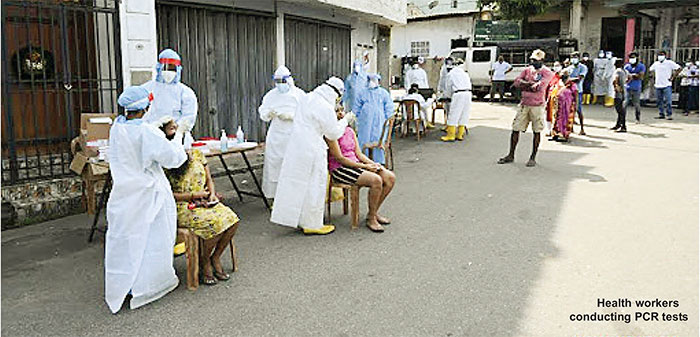
A seroprevalence rate of 24.5% was seen in all age groups in the CMC in the end of January 2021, a research carried by Sri Lankan and British researchers has revealed. This is a much higher number than what the PCR tests indicated.
The research was carried out in the Colombo city, which experienced the highest number of coronavirus cases until the end of January 2021, the researchers have said. Although Sri Lanka had successfully contained the pandemic until the end of September, with no locally detected cases from August to September 2020, an explosive spread began during early October, which rapidly spread across the country.
“However, as Colombo is the commercial capital of the country, and also due to extremely overcrowded living conditions, 32,346/89,817 (36.01%) locally detected cases by the end of March 2021, were from Colombo. Of the cases in the Colombo District, 14,416 (44.6%) were identified within the city. We carried out a serosurvey prior to initiation of the vaccination programme to understand the extent of the SARS-CoV-2 outbreak”, they said.
The researchers added that although the seropositivity rate was highest in the 10–20 age group (34.03%), the PCR positivity rate was 9.80%. Therefore, the PCR positivity rates appear to underestimate the true extent of the outbreak and the age groups which were infected. They said that in many countries, the reported number of cases did not necessarily reflect the extent of the outbreak, age groups infected and groups at risk, as the majority of infections were asymptomatic and limitations in carrying out quantitative real-time PCR for SARS-CoV2. It has been estimated that surveillance of SARS- CoV2 with qRT-PCR alone may underestimate the true prevalence by tenfold.
“Differences in the PCR positivity rates and seropositivity rates were also seen in 60–70-year-olds (8.90 vs 30.4%) and in individuals 70 years (4.10 vs. 1.20%). The seropositivity rate of the females was 29.70% (290/976), which was significantly higher than in males 21.2% (333/1,571), the researchers said.
It is important to carry out serosurveillance studies to understand the true extent of an outbreak in order to understand the future outbreaks that may occur in a particular area and to further understand transmission dynamics and duration of immunity, the researchers have said.
“Based on the seropositivity rates of 24.46%, 138,276 individuals are likely to have been infected, compared to the reported PCR positive cases of 14,416. Therefore, infection detection rates by PCR appeared to have underestimated the actual number of infections by 9.59-fold, which is not surprising as the random PCRs were mainly carried out in the working population and less frequently in those who were confined to their houses.” They claimed that as samples for PCR were obtained on only certain days of the week when the team visited the housing complexes and residential areas, the population who underwent PCRs on most days mainly represented the working population. Blood samples were obtained from these participants at the same time when samples were taken from them for these routine random PCR testing for SARS-CoV-2. None of the participants had any symptoms at the time of obtaining blood samples and were not previously diagnosed as been infected with the SARS-CoV-2 virus.
The researchers further claimed that the Colombo city was divided into six districts: namely D1, D2A, D2B, D3, D4, and D5. Although the overall seroprevalence was 24.46%, certain districts in the CMC (D2A, D2B, and D3) had higher seroprevalence rates (26.2–39%) compared to D4 which only had a seroprevalence rate of 3.33%. These overall differences between the districts reflected the population density and the housing conditions in these districts, with the districts with high seroprevalence having more overcrowded areas, with poor housing conditions. The differences in the seroprevalence rates in different districts could also be due to differences in the control measured adopted. For instance, in D1, although the seroprevalence was 14.76%, certain areas in this district had a very high infection rate as determined by PCR positivity. Due to early detection of SARS-CoV-2 infection in certain areas in this district, these areas were isolated very early, and therefore, it would have curtailed the spread to the rest of the D1 district resulting in fewer infections. Such similar differences have been observed in many states in India, where the slum areas reported seroprevalence rates between 52.6 to 58.7% compared to 12–17.9% in non-slum areas Although the overall seroprevalence rates in the CMC was less than urban areas in India, it was higher than many areas in Europe (Spain, Sweden, Switzerland, and Germany), which reported a seroprevalence between 5 to 13.6% and Iran (22.16%), which reported higher infection rates (14–17). However, the use of different antibody assays, which had a varying degree of sensitivity and specificities in these different studies could result in such differences.
Chandima Jeewandara, Dinuka Guruge, Inoka Sepali Abyrathna, Saubhagya Danasekara, Banuri Gunasekera, Pradeep Darshana Pushpakumara, Deshan Madhusanka, Deshni Jayathilaka, Thushali Ranasinghe, Gayasha Somathilake, Shyrar Tanussiya, Tibutius Tanesh Jayadas, Heshan Kuruppu, Nimasha Thashmi, Michael Harvie, Ruwan Wijayamuni, Lisa Schimanski, T. K. Tan, Pramila Rijal, Julie Xiao, Graham S. Ogg, Alain Townsend and Gathsaurie Neelika Malavige were the researchers involved. (RK)
Latest News
Level III landslide early warnings issued to the Districts of Kandy, Kegalle, Kurunegala and Matale extended

The landslide early warning center of the National Building Research Organisation [NBRO] has extended the Level III RED landslide early warnings issued to the Districts of Kandy, Kegalle, Kurunegala and Matale until 1600hrs on 11th December 2025.
Accordingly,
The LEVEL III RED landslide warnings issued to the the Divisional Secretaries Divisions and surrounding areas of Kundasale, Pasbage Korale, Medadumbara, Ganga Ihala Korale, Hatharaliyadda, Pathadumbara, Doluwa, Panvila, Gangawata Korale, Ududumbara, Akurana, Yatinuwara, Harispattuwa, Deltota, Thumpane, Poojapitiya, Udapalatha, Udunuwara, Minipe and Pathahewaheta in the Kandy district, Aranayaka, Yatiyanthota, Rambukkana, Bulathkohupitiya and Mawanella in the Kegalle district, Mallawapitiya, Mawathagama and Rideegama in the Kurunegala district, and Rattota, Laggala Pallegama, Ukuwela, Matale, Wilgamuwa, Pallepola, Naula, Yatawatta and Ambanganga Korale in the Matale district have been extended.
LEVEL II AMBER landslide early warnings have been issued to the Divisional Secretaries Divisions and surrounding areas of Uva Paranagama, Hali_Ela, Meegahakivula, Badulla, Kandeketiya, Bandarawela, Soranathota, Ella, Haputhale, Lunugala, Welimada, Haldummulla and Passara in the Badulla district, Warakapola, Galigamuwa, Kegalle, Dehiowita, Ruwanwella and Deraniyagala in the Kegalle district, Polgahawela and Alawwa in the Kurunegala district, Kothmale East, Walapane, Thalawakele, Nuwara Eliya, Kothmale West, Nildandahinna, Mathurata, Ambagamuwa Korale, Hanguranketha and Norwood in the Nuwara Eliya district. and Kolonna, Godakawela and Kahawaththa in the Ratnapura district.
LEVEL I YELLOW landslide early warnings have been issued to the Divisional Secretaries Divisions and surrounding areas of Divulapitiya, Attanagalla and Mirigama in the Gampaha district, Narammala in the Kurunegala district, and Kiriella, Eheliyagoda, Balangoda, Kaltota, Openayake, Nivithigala, Imbulpe, Ayagama, Kuruwita, Kalawana, Elapatha, Pelmadulla and Ratnapura in the Ratnapura district.
News
“We cannot allow flooding to become a part of the daily lives of the people in the Colombo District” – PM

Prime Minister Dr. Harini Amarasuriya stated that unauthorized constructions within the Colombo District, nor any form of residential developments that endanger the public carried out under the guise of development agenda will not be allowed.
The Prime Minister made these remarks while addressing the media at the conclusion of the Colombo District Disaster Management Committee meeting held on Tuesday [December 09] at the Colombo District Secretariat.
Addressing further, the Prime Minister stated:
“The Colombo District has become vulnerable to this extent due to the constructions carried out without any proper planning or understanding of regulations, along with personal and politically motivated decisions that have placed both the district and its people at risk.
Compared to the districts that suffered severe loss of life and property due to the recent cyclone, the damage to the Colombo District has been relatively lower. However, special intervention is being carried out together with the relevant institutions to manage the potential future flood risks in the district.
This matter was also given special attention during today’s District Disaster Management Committee meeting. We cannot allow the flooding to become a regular part of the lives of the people in Colombo. All relevant institutions will come together to put forward a common plan for flood control in the district.”
The Prime Minister further stated that discussions are already underway to provide sustainable solutions for the people living in high-risk areas within the Colombo District.
The discussion was attended by the Deputy Minister of Urban Development Eranga Gunasekara, Deputy Minister of Mass Media Kaushalya Ariyaratne, and Colombo District Members of Parliament Aruna Panagoda and Chandana Suriyarachchi.
[Prime Minister’s Media Division]
Latest News
Russia gifts 35 tonnes of Humanitarian Aid to Sri Lanka
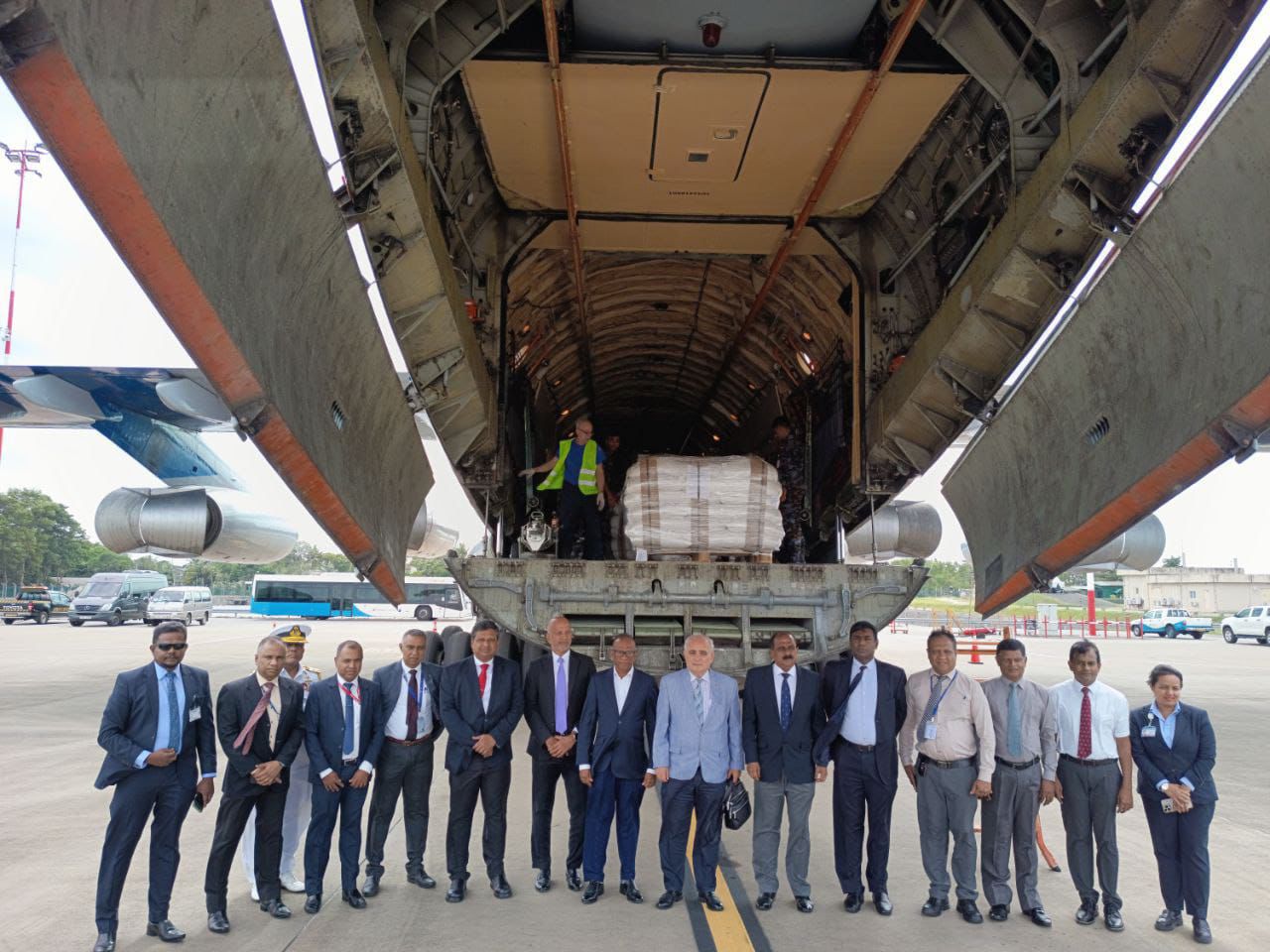
The handover of 35 tonnes of Russian Humanitarian Aid to Sri Lanka, recently affected by the cyclone «Ditwah», took place at Katunayake today (10th December)
The shipment was welcomed at the Katunayake airport by Ambassador of Russia Levan Dzhagaryan, Minister of Ports and Civil Aviation Anura Karunathilaka and Deputy Minister of Defence, Major General Aruna Jayasekara (Retd).
Ambassador Levan Dzhagaryan: said “This delivery is a reflection of long-term friendly relations between Russia and Sri Lanka and reaffirms Moscow’s commitment to support countries in a difficult humanitarian situation.”
The supplies brought by the EMERCOM (Russian Ministry of Emergency Situations) aircraft comprised a movable 60 kW electric power station, Pumping equipment for water drainage, Summer tents (10-person capacity) and Food supplies (sugar, vegetable oil, rice)
The total cargo weight is 35 metric tonnes. The aid will be distributed among the most affected regions.
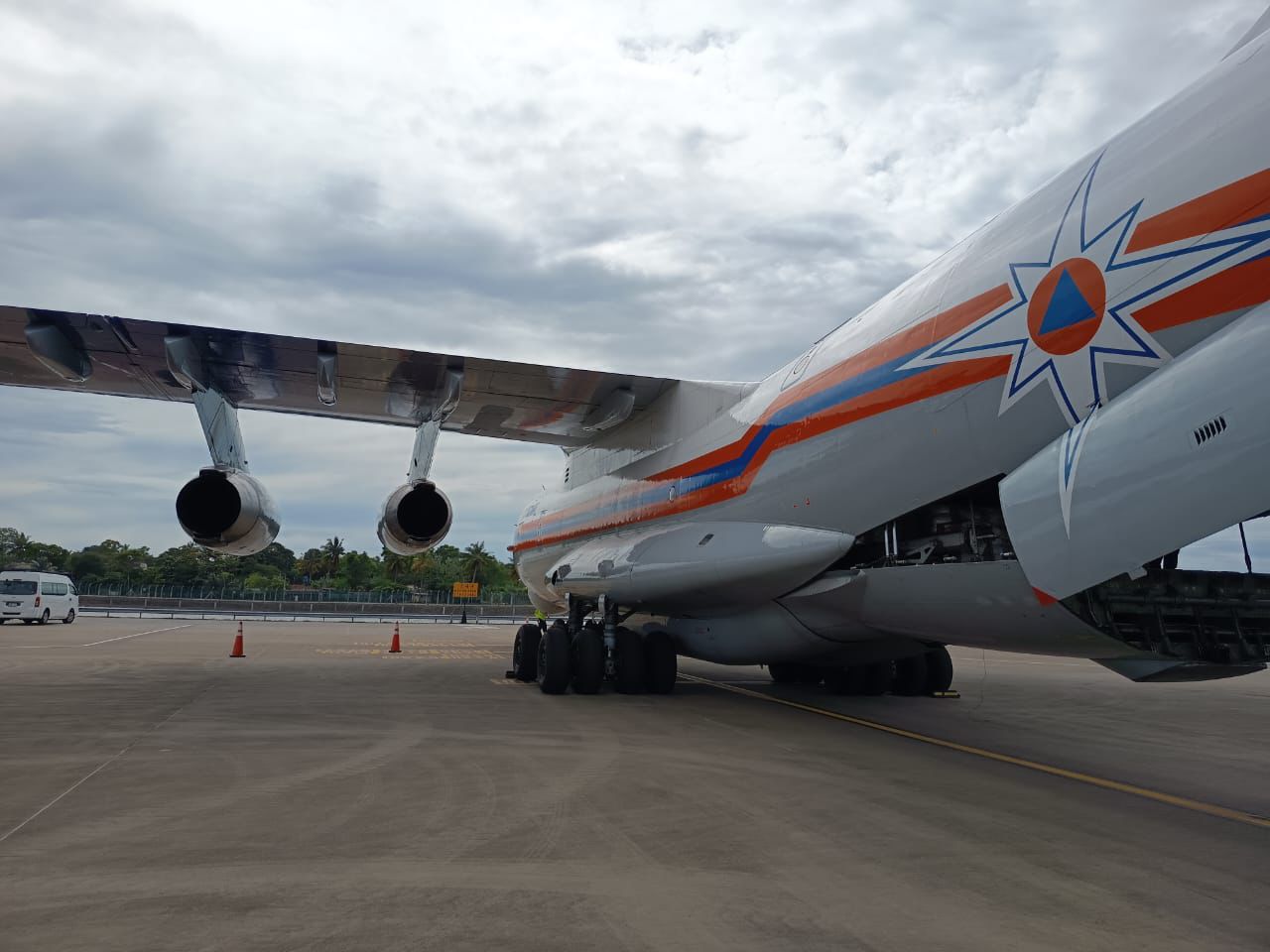


-

 News3 days ago
News3 days agoOver 35,000 drug offenders nabbed in 36 days
-
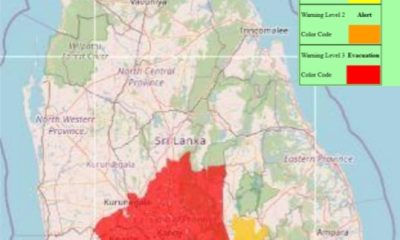
 News7 days ago
News7 days agoLevel III landslide early warning continue to be in force in the districts of Kandy, Kegalle, Kurunegala and Matale
-

 Business5 days ago
Business5 days agoLOLC Finance Factoring powers business growth
-

 News5 days ago
News5 days agoCPC delegation meets JVP for talks on disaster response
-
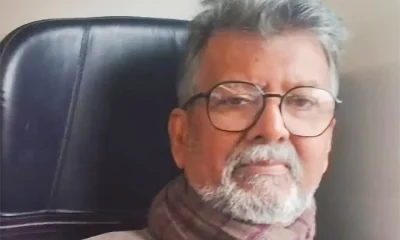
 News2 days ago
News2 days agoCyclone Ditwah leaves Sri Lanka’s biodiversity in ruins: Top scientist warns of unseen ecological disaster
-
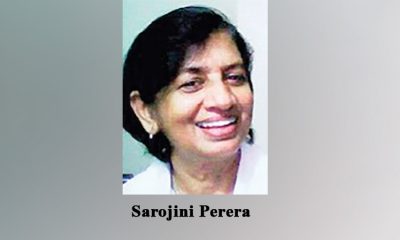
 News5 days ago
News5 days agoA 6th Year Accolade: The Eternal Opulence of My Fair Lady
-

 News3 days ago
News3 days agoRising water level in Malwathu Oya triggers alert in Thanthirimale
-

 Features4 days ago
Features4 days agoThe Catastrophic Impact of Tropical Cyclone Ditwah on Sri Lanka:













